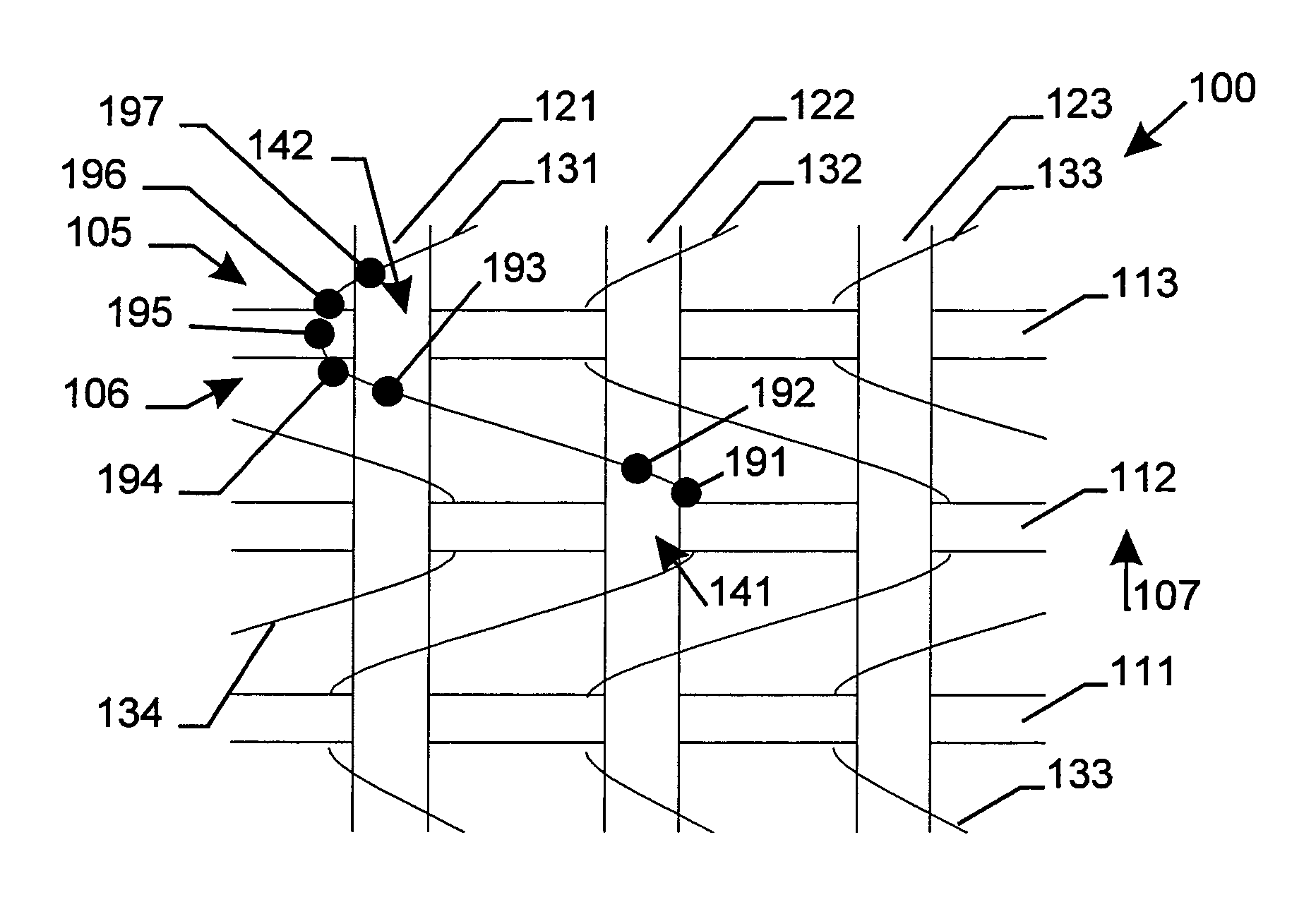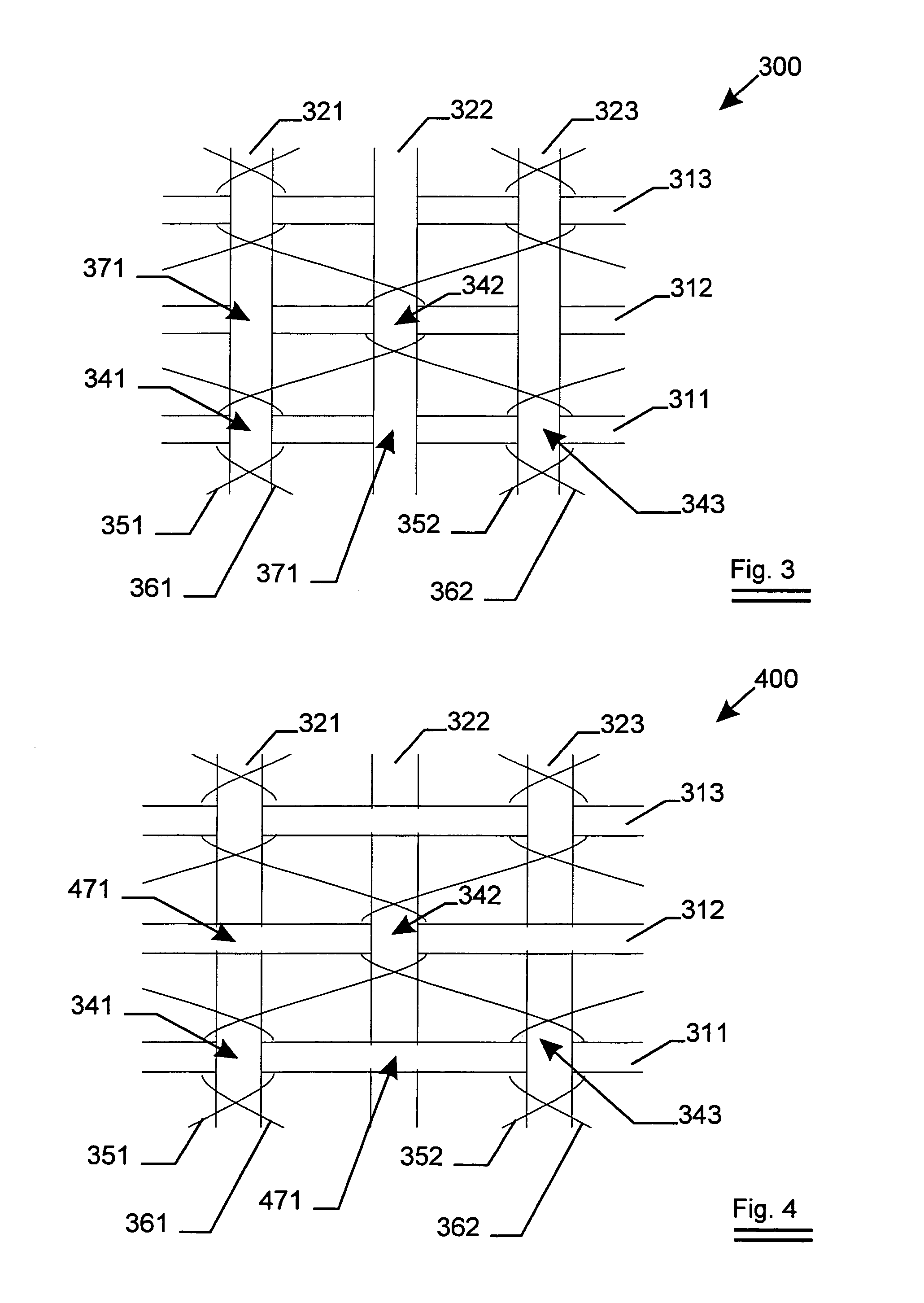Woven fabric comprising leno weave bound metal
a technology of woven fabric and metal, which is applied in the field of woven fabric comprising metal elements, can solve the problems of fabric having fabric has the tendency to move in the unwinding direction, and the fabric has the tendency to run out of alignment, so as to achieve the effect of stable dimensions and not showing the tendency to curl
- Summary
- Abstract
- Description
- Claims
- Application Information
AI Technical Summary
Benefits of technology
Problems solved by technology
Method used
Image
Examples
Embodiment Construction
[0035]A woven fabric 100 as subject of the invention is shown in FIG. 1. The fabric 100 comprises weft elements (111, 112, 113) which are bound to warp elements (121, 122, 123) by means of one set of binding elements (131, 132, 133, 134) at each intersection point of a warp and a weft element.
[0036]At the intersection point 141, where warp element 122 and weft element 112 cross, the binding element 131 binds these warp and weft elements. At the consecutive intersection point 142, further in the warp direction 107 of the woven fabric 100, this binding element binds weft element 113 and warp element 121.
[0037]At point 191 of the binding element 131, the binding element 131 is at the right side of first warp element 121 and second warp element 121. When following the binding element 131 in the warp direction from point 191 onwards, the binding element 131 crosses warp elements 122 and 121 in this order in the left direction at points 192 and 193. At point 194, the binding element 131, ...
PUM
| Property | Measurement | Unit |
|---|---|---|
| optical diameter | aaaaa | aaaaa |
| diameter | aaaaa | aaaaa |
| diameter | aaaaa | aaaaa |
Abstract
Description
Claims
Application Information
 Login to View More
Login to View More - R&D
- Intellectual Property
- Life Sciences
- Materials
- Tech Scout
- Unparalleled Data Quality
- Higher Quality Content
- 60% Fewer Hallucinations
Browse by: Latest US Patents, China's latest patents, Technical Efficacy Thesaurus, Application Domain, Technology Topic, Popular Technical Reports.
© 2025 PatSnap. All rights reserved.Legal|Privacy policy|Modern Slavery Act Transparency Statement|Sitemap|About US| Contact US: help@patsnap.com



